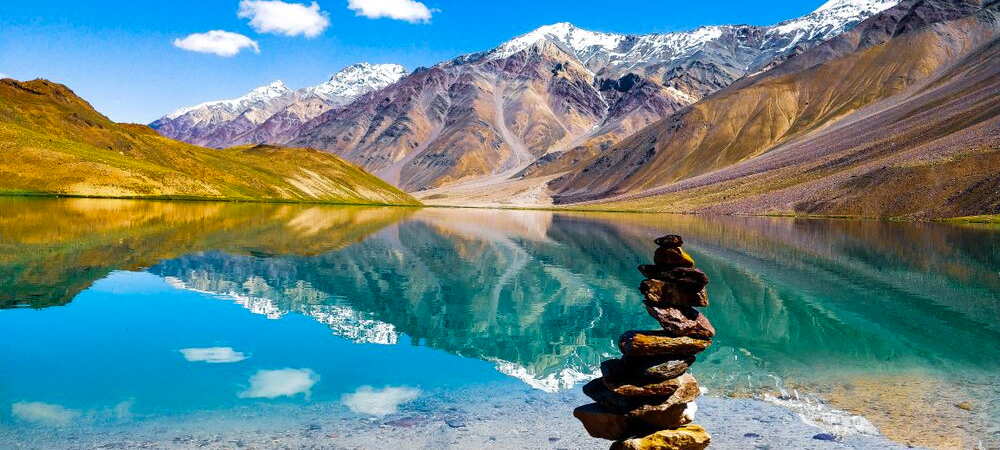Ladakh and the Himalayas
Experiencing the valleys, rivers and any one of the 50 mountain ranges that form the Himalayas is truly once-in-a-lifetime journey. India’s share of Himalayan peaks are among the highest of the range and home to the elusive and endangered snow leopard. Kangchenjunga (the third highest mountain in the world, and the highest in India) is found in Sikkim, followed by Nanda Devi, the second highest peak in India, is located in the state of Uttarakhand. The origins of yoga, along with the many ashrams that have sprouted up in this mountainous landscape, can also be found in this state, and Rishikesh is now considered the yoga capital of the world. It is in this mystical state and in Gangotri that the source of the sacred Ganges emerges. A gateway to some of India’s most pristine and undiscovered countryside and valleys, Uttarakhand is home to a very unique mountain culture.
Journey further north to Himachal Pradesh and you’ll come across many magical mountain villages, many steeped in Tibetan culture. Dharamsala is the home of the Dalai Lama, and has been the base of the Tibetan Government in exile since 1959. Shimla, the one-time summer capital for the British Raj, is now a bustling city, popular with domestic tourists, and train enthusiasts who arrive on the UNESCO World Heritage Toy Train.
Beyond the borders of this state is possibly India’s most magnificent part of the Himalayas – Ladakh. The journey into Ladakh’s capital Leh presents landscapes unlike any other in the world, and altitudes that leave one breathless. Ladakh has a vibrant culture, influenced strongly by Tibetan beliefs and art forms. Pause for a moment at a hilltop monastery for meditation against a deep blue sky, or witness one of the many colourful festivals which draws people from hundreds of nearby villages.
Year round, hiking and epic treks are possible in Ladakh, with long and harsh winters, and a brief summer season between May and September end. But what an experience it offers the adventurous traveler: glistening mountain lakes, frozen rivers, desolate desert valleys of the Nubra, monasteries that seemingly sit precariously to sheer cliffs. It is home of the elusive snow leopard, best seen between December and March, as they come down to the lower valleys for food.





